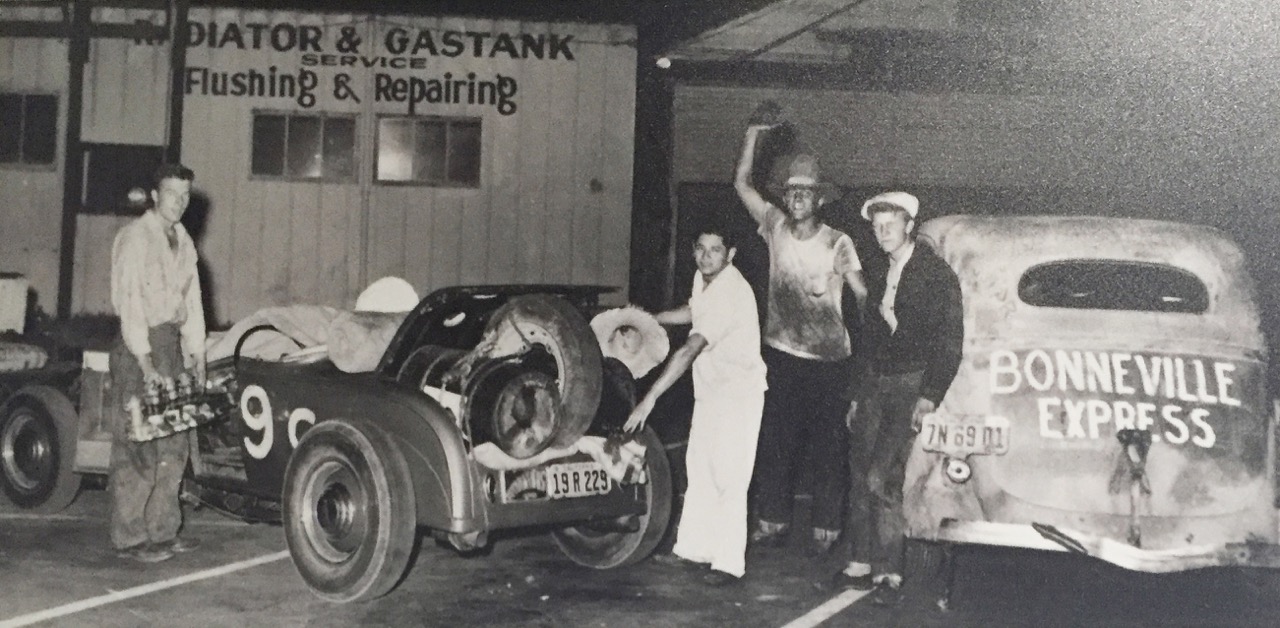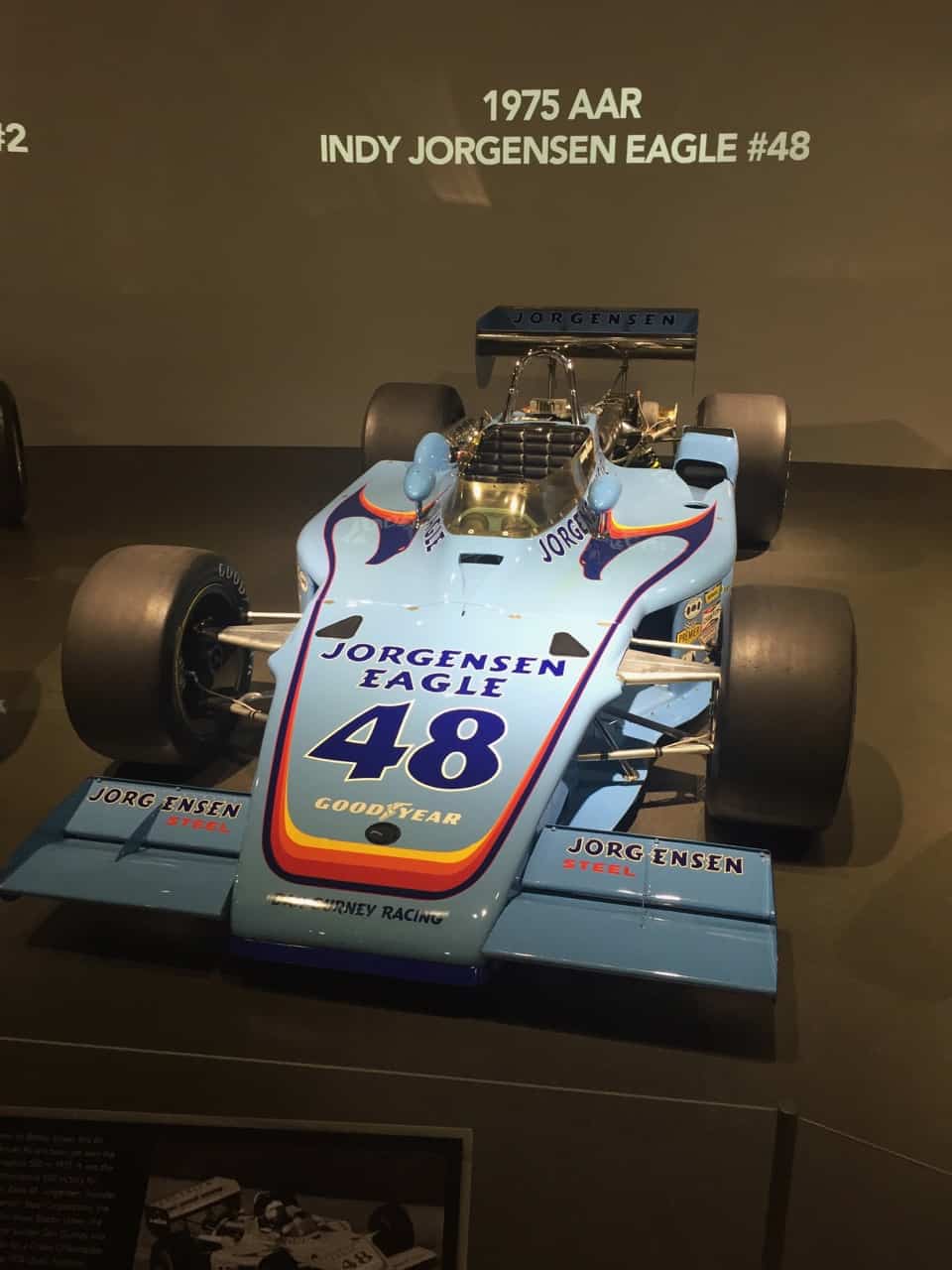 | Evi and Dan
Met when Dan was racing Formula 1 for Porsche in 1961 and ’62. Evi Butz had been a personal assistant for Huschke von Hanstein before becoming a Porsche’s public relations executive. It was several years later before Dan made the call that changed their lives.
|
 | 1967: The Bottle
Dan remembers: “I was so stoked that a bunch of Yanks along with Ford Motor Company had won this magnificent race (24 Hours of Le mans)! What I did was totally spontaneous; I had no idea that it would start a tradition. I was beyond caring and caught up in the moment. It was one of those once-in-a-lifetime occasions where things turned out perfectly. I thought this hard fought victory needed something special!”
LIFE magazine photographer Flip Schulke was on the podium “I got one photo and then ducked” Dan signed the empty bottle and handed it to him. A few years ago he returned it. “After all, he is the one who should have it.”
|
 | 1967: All American Racers (AAR) Gurney-Weslake Eagle
3-liter V-12 F1 Grand Prix Car
One week after winning Le Mans in an American car, Gurney won the Belgian Grand Prix in his own AAR car, though designed and built in England; Harry Weslake constructed the magnesium monocoque with its titanium suspension components and the V12 was designed by Aubrey Woods to be used by the Peter Berthon and Raymond Mays BRM team, but they turned it down in favor of a problematic H16. The V12 was plagued by external system failures, usually when it was near the front of the pack — until 18 June 1967 at the XIII Grote Prijs Van Belgie.
|
 | 1968: AAR USAC Indy Olsonite Eagle
Dan won the 1967 Rex Mays 300 at Riverside International Raceway in this car (there were 6 AAR Eagles in the race, Bobby Unser was second in one), and came back in 1968 and won it again (8 AAR Eagles in the race and Bobbie Unser was second again).
|
 | 1968: AAR Can-Am Olsonite McLeagle
Based on a McLaren M6B, this car never appeared in any two races in the same configuration, including suspension geometry and several wing setups, one mounted on the rear suspension. Starting with the Ford-based engines, by 1969 AAR resorted the big-block Chevrolets that were winning.
|
 | 1970: AAR Trans-Am Plymouth Barracuda
Chrysler’s Plymouth Division had AAR prepare three Barracudas to be driven by Dan Gurney and Swede Savage. They used Chrysler 340 engines, destroked to 302. The car in the exhibit is the one Dan drove in his last race at Riverside. After its Trans-Am era ,it was sold to Chrysler France and ran Le Mans and some of the hill climb events. Its AAR livery was found under layers of paint.
|
 | 1971: AAR Olsonite Eagle
This unique turbo Offy-powered car was designed by Len Terry and Roman Slobodynskj; it was driven primarily by Bobby Unser this qualified on the pole in seven out of 10 races and set four track records, including the fastest lap ever at the Indianapolis Speedway up to that time. It won at Trenton and Milwaukee and was the tool with which Dan Gurney experimented with his “Gurney Flap” at a Phoenix International Raceway testing session.
|
 | 1977: AAR SCCA Eagle Formula Ford
AAR worked with David Loring to design and build a Formula Ford. In 1977 he won two races and finished second at the Atlanta Run-off. The following year he won four of nine races and won the Run-Offs by the biggest margin in history.
|
 | 1981: AAR Indy Eagle “Pepsi Challenger”
Gurney’s favorite AAR race car. It incorporated Boundry Layer Adhesion Technology, designed by AAR engineers Trevor Harris and John Ward along with Dan Gurney. The system created a vortex effect that provided downforce over the entire car. It qualified on the front row at the Indy 500, won the Milwaukee 150 from the back row and led at the Norton Michigan 500, Riverside LA Times 500 and the Watkins Glen 200. It was outlawed the following year.
|
 | 1993: AAR-Toyota Eagle Mk III GTP (The Car of the Decade)
This car was the culmination of a decade-long partnership between AAR and Toyota. AAR chief designer John Ward and aerodynamicist Hiro Fujimori created the car and Toyota Racing Development supplied the turbocharged 16-valve dohc inline-four cylinder engine. It won every race it entered, 17 consecutive victories.
|
 | 1999: AAR Eagle 997 Champ Car
The 1998 Eagle 987 Champ Cars were modified by David Burns and his design team, and the redo included a Toyota V8 engine. After the 1999 season that included four different drivers, the final edition of the AAR Eagle failed to achieve its promise.
|
 | 2002 Gurney Grand Prix Alligator A6
After decades spent in dreams, designs and development, the race car driver’s motorcycle was limited to only 36 finished units. All were finished in the livery of the Spa=winning Eagle and carried its number 36. Nonetheless, each is a treasure for all time and is enjoyed by friends and fans of its creator.
|


















